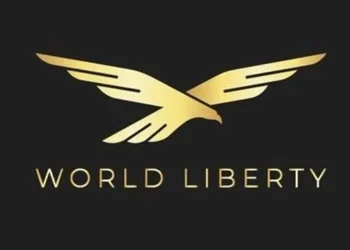

In Transient
Anthony Leutenegger, CEO of Aragon, shares how DAOs are maturing in 2025 and evolving towards extra resilient, clear, and scalable governance techniques.

Few leaders have seen the event of DAOs from as many angles as Anthony Leutenegger, from early experimentation to steering one of many ecosystem’s most influential governance tasks. On this interview, the Aragon CEO displays on how decentralized governance is maturing in 2025, why the subsequent wave of DAOs will look nothing like their predecessors, and what it actually takes to construct resilient, clear decision-making techniques at scale.
Anthony, may you share your journey into Web3?
I’ve been working at Aragon for 4 and a half years. I joined crypto as a result of I discovered this nice venture that was a subsidiary of Aragon known as Vocdoni, and so they have been constructing a blockchain-based voting protocol. Its objective was finally to have nation-states working incorruptible elections.
I assumed, what an unbelievable and ideal use case for blockchain know-how. We’re in a world and trade the place there’s a variety of hypothesis and cash flowing round, and people are respectable use circumstances, however having the ability to have incorruptible elections may remedy a plethora of world issues.
That’s why I utilized for a job at Vocdoni. I ultimately moved into the Aragon venture, which owned Vocdoni on the time and targeted extra on governance, capital distribution, and token economics at a a lot larger stage than simply voting. I later took over the corporate, and now issues are going nice.
Might you give us an outline of Aragon’s present mission and the way it has advanced over the previous couple of years?
Yeah, our present mission has positively advanced over the previous couple of years. It was about permitting organizations to experiment with governance on the velocity of software program. The purpose was that you could possibly have choices executed with out trusted intermediaries. It’s the identical as making a fee on a blockchain; you take away the middleman. With blockchain know-how, we are able to take away intermediaries from executing an motion. Within the conventional world, folks vote or take part, however actions often require others to execute them.
Now, choices, whether or not it’s shifting funds, upgrading code, or granting entry, will be made by a bigger group of individuals with out anybody within the center. It turns into very censorship-resistant. It’s the primary time in historical past we are able to do that as a result of we abide by the code as legislation.
That was Aragon’s outdated mission, and we nonetheless work closely in governance. We nonetheless permit organizations to construct their access-control mechanisms for a way they govern their code base. For instance, when Lido needs to improve its code, they do it on Aragon’s sensible contracts. We safe their code base. If Katana needs to maneuver cash on the brand new Polygon venture, that’s the identical factor.
Now we’ve expanded into tokenomics. We help tasks in constructing their very own governance techniques, tokenomic techniques, and development flywheels. Our mission is way broader at this time.
In your view, what are the important thing differentiators of Aragon’s governance framework in comparison with different DAO tooling or platforms?
Yeah, we positively have the most recent modular mannequin. We separate the vault and core permissions from the governance methodologies, and anybody can set up these methodologies or plugins to attain what they need. For instance, if you would like a governance kind that isn’t token-based voting, you possibly can set up the multisig plugin or the digital identification plugin.
You possibly can even set up a number of plugins on the identical time, permitting completely different teams, perhaps a multisig and token holders, to control collectively. It’s extremely customizable, upgradable, and at all times includes tokenomics. Tokens drive virtually every little thing in our trade, so with the Aragon stack, you possibly can create lockers, stakers, and mechanisms for locking, staking, and capital distribution. It’s modular, customizable, and future-proof.
What’s the strategic significance of modular governance contracts, for instance, plugins for scaling organizations over time?
Yeah, it’s tremendous vital. Main tasks wish to alter governance and capital flows extra simply, however many can’t do it safely as a result of they’re caught with outdated, heavy, library-based contracts. Making issues modular permits simpler changes. Upgrading turns into so simple as uninstalling and putting in a brand new plugin, which is only a small a part of the code base.
You possibly can improve from multisig to token-holder voting as you decentralize over time. You possibly can add staking mechanisms for token holders to regulate capital flows. It makes governance safer, extra customizable, and extra future-proof. It’s unquestionably a greater system.
What are an important coverage or regulatory traits you see that can have an effect on on-chain organizations within the subsequent 12 to 24 months?
Yeah, that’s an awesome query. What we’re seeing, particularly from the US and from what corporations like a16z are discussing, is that on-chain possession or on-chain management will change into an important parameter defining decentralization. It received’t essentially seem like the outdated DAO mannequin the place everybody votes on every little thing.
It is going to give attention to a smaller floor space of management, however that management have to be decentralized, which means token holders should even have management with out an middleman basis or multisig. Or the system will must be immutable, the place no particular person or group can change the code for private profit.
So decentralization shall be outlined by management and possession. I believe we’ll see much less generalized governance and extra give attention to governing particular issues that have to be decentralized, protocol upgrades, charge switches that distribute worth to token holders, and related elements.
How do you put together for adapting to those regulatory modifications?
Fortunately, we’ve been getting ready for years. Three years in the past, we already noticed this drawback and began shifting towards addressing it. On our present stack, you possibly can management your protocol in a extremely decentralized method with out having to vote on every little thing. Completely different folks can management various things, and tasks can outline how entry management is structured.
On prime of that, we create automated and programmatic capital-distribution flows. Tasks that wish to accrue worth to their token can accomplish that in a programmatic, automated method that isn’t centrally managed, making it extra more likely to meet future regulatory expectations, one thing our rivals can not do.
What are the principle dangers you foresee for organizations adopting on-chain governance, and the way does Aragon search to mitigate them?
I believe the technological aspect is usually solved. We’ve created a really protected atmosphere for organizations, and we’ve secured 45 billion {dollars} in property since 2017–18. For me, the larger threat is what’s being managed and by whom.
Proper now, many tasks counting on token holders for safety face an issue: safety degrades over time if the token has no worth. If a token secures a protocol however the venture isn’t producing income, there’s no incentive to carry it. Folks promote, decentralization decreases, and the system breaks down.
We’d like tokens to carry worth and safe one thing significant. When that occurs, the system naturally turns into safer.
For a company contemplating launching a DAO by way of the Aragon app, what key strategic governance choices have to be made upfront?
They should perceive who will management what. Additionally they want to grasp the worth of the token that controls protocol parameters, which is important. Different issues embrace whether or not they need a VE mannequin, a locker mannequin, for token holders to lock or stake, or whether or not they need an ERC20 vote-standard token. These are nuanced choices, and they need to attain out to us earlier than launching.
However most significantly, they have to perceive the place their product is heading, how will probably be managed, and why folks will take part in guaranteeing it stays decentralized.
Might you share any success tales or case research the place Aragon’s governance structure considerably improved organizational outcomes?
Yeah, for certain. Let’s have a look at Curve. Many tasks are actually adopting the VE gauge mechanism, which is changing into standard once more. The primary model of ve & gauges was in-built Aragon in 2020 by Curve. VE stands for vote escrow, which means a token holder locks tokens for a interval and good points particular voting energy primarily based on parameters set by the venture.
The concept is that as a result of they’re locked into the system, they need the token to be price extra when it unlocks. They’re usually given energy over distributing capital, liquidity, or different vital sources. They vote within the long-term curiosity of the protocol. The extra they take part, the extra rewards they obtain.
This creates a development flywheel, incentives to carry, take part, and make good choices. Tasks with respectable product-market match utilizing ve & gauges, Curve, Aerodrome, Katana, and others, have seen constructive outcomes, together with the next proportion of tokens locked and elevated valuation.
How do you view the way forward for governance requirements, finest practices, auditability, and transparency for on-chain organizations?
I don’t assume we’re at a technological level the place we should always outline strict requirements but. It’s nonetheless too early. We’d like extra natural adoption and extra tooling earlier than issues ossify into requirements.
Nevertheless, governance requirements shall be formed by regulation, notably round how capital and incentives will be distributed. Tasks finally wish to generate income and improve token worth, in order that they’ll study and adapt as clearer laws emerge. As adoption grows and extra use circumstances seem, we’ll have the ability to outline higher finest practices.
We already see early examples. Lido is a profitable DAO working in a strategic method. The ve & gauge mechanism works properly for DEXs like Curve. And DUNA is rising for tasks like Uniswap, with decentralized governance over particular parameters.
We’re beginning to see the primary hints of requirements and finest practices.
Disclaimer
In keeping with the Belief Mission pointers, please be aware that the knowledge supplied on this web page will not be meant to be and shouldn’t be interpreted as authorized, tax, funding, monetary, or every other type of recommendation. It is very important solely make investments what you possibly can afford to lose and to hunt unbiased monetary recommendation when you’ve got any doubts. For additional data, we propose referring to the phrases and circumstances in addition to the assistance and help pages supplied by the issuer or advertiser. MetaversePost is dedicated to correct, unbiased reporting, however market circumstances are topic to vary with out discover.
About The Writer
Victoria is a author on quite a lot of know-how matters together with Web3.0, AI and cryptocurrencies. Her intensive expertise permits her to put in writing insightful articles for the broader viewers.

Victoria d’Este

Victoria is a author on quite a lot of know-how matters together with Web3.0, AI and cryptocurrencies. Her intensive expertise permits her to put in writing insightful articles for the broader viewers.


In Transient
Anthony Leutenegger, CEO of Aragon, shares how DAOs are maturing in 2025 and evolving towards extra resilient, clear, and scalable governance techniques.

Few leaders have seen the event of DAOs from as many angles as Anthony Leutenegger, from early experimentation to steering one of many ecosystem’s most influential governance tasks. On this interview, the Aragon CEO displays on how decentralized governance is maturing in 2025, why the subsequent wave of DAOs will look nothing like their predecessors, and what it actually takes to construct resilient, clear decision-making techniques at scale.
Anthony, may you share your journey into Web3?
I’ve been working at Aragon for 4 and a half years. I joined crypto as a result of I discovered this nice venture that was a subsidiary of Aragon known as Vocdoni, and so they have been constructing a blockchain-based voting protocol. Its objective was finally to have nation-states working incorruptible elections.
I assumed, what an unbelievable and ideal use case for blockchain know-how. We’re in a world and trade the place there’s a variety of hypothesis and cash flowing round, and people are respectable use circumstances, however having the ability to have incorruptible elections may remedy a plethora of world issues.
That’s why I utilized for a job at Vocdoni. I ultimately moved into the Aragon venture, which owned Vocdoni on the time and targeted extra on governance, capital distribution, and token economics at a a lot larger stage than simply voting. I later took over the corporate, and now issues are going nice.
Might you give us an outline of Aragon’s present mission and the way it has advanced over the previous couple of years?
Yeah, our present mission has positively advanced over the previous couple of years. It was about permitting organizations to experiment with governance on the velocity of software program. The purpose was that you could possibly have choices executed with out trusted intermediaries. It’s the identical as making a fee on a blockchain; you take away the middleman. With blockchain know-how, we are able to take away intermediaries from executing an motion. Within the conventional world, folks vote or take part, however actions often require others to execute them.
Now, choices, whether or not it’s shifting funds, upgrading code, or granting entry, will be made by a bigger group of individuals with out anybody within the center. It turns into very censorship-resistant. It’s the primary time in historical past we are able to do that as a result of we abide by the code as legislation.
That was Aragon’s outdated mission, and we nonetheless work closely in governance. We nonetheless permit organizations to construct their access-control mechanisms for a way they govern their code base. For instance, when Lido needs to improve its code, they do it on Aragon’s sensible contracts. We safe their code base. If Katana needs to maneuver cash on the brand new Polygon venture, that’s the identical factor.
Now we’ve expanded into tokenomics. We help tasks in constructing their very own governance techniques, tokenomic techniques, and development flywheels. Our mission is way broader at this time.
In your view, what are the important thing differentiators of Aragon’s governance framework in comparison with different DAO tooling or platforms?
Yeah, we positively have the most recent modular mannequin. We separate the vault and core permissions from the governance methodologies, and anybody can set up these methodologies or plugins to attain what they need. For instance, if you would like a governance kind that isn’t token-based voting, you possibly can set up the multisig plugin or the digital identification plugin.
You possibly can even set up a number of plugins on the identical time, permitting completely different teams, perhaps a multisig and token holders, to control collectively. It’s extremely customizable, upgradable, and at all times includes tokenomics. Tokens drive virtually every little thing in our trade, so with the Aragon stack, you possibly can create lockers, stakers, and mechanisms for locking, staking, and capital distribution. It’s modular, customizable, and future-proof.
What’s the strategic significance of modular governance contracts, for instance, plugins for scaling organizations over time?
Yeah, it’s tremendous vital. Main tasks wish to alter governance and capital flows extra simply, however many can’t do it safely as a result of they’re caught with outdated, heavy, library-based contracts. Making issues modular permits simpler changes. Upgrading turns into so simple as uninstalling and putting in a brand new plugin, which is only a small a part of the code base.
You possibly can improve from multisig to token-holder voting as you decentralize over time. You possibly can add staking mechanisms for token holders to regulate capital flows. It makes governance safer, extra customizable, and extra future-proof. It’s unquestionably a greater system.
What are an important coverage or regulatory traits you see that can have an effect on on-chain organizations within the subsequent 12 to 24 months?
Yeah, that’s an awesome query. What we’re seeing, particularly from the US and from what corporations like a16z are discussing, is that on-chain possession or on-chain management will change into an important parameter defining decentralization. It received’t essentially seem like the outdated DAO mannequin the place everybody votes on every little thing.
It is going to give attention to a smaller floor space of management, however that management have to be decentralized, which means token holders should even have management with out an middleman basis or multisig. Or the system will must be immutable, the place no particular person or group can change the code for private profit.
So decentralization shall be outlined by management and possession. I believe we’ll see much less generalized governance and extra give attention to governing particular issues that have to be decentralized, protocol upgrades, charge switches that distribute worth to token holders, and related elements.
How do you put together for adapting to those regulatory modifications?
Fortunately, we’ve been getting ready for years. Three years in the past, we already noticed this drawback and began shifting towards addressing it. On our present stack, you possibly can management your protocol in a extremely decentralized method with out having to vote on every little thing. Completely different folks can management various things, and tasks can outline how entry management is structured.
On prime of that, we create automated and programmatic capital-distribution flows. Tasks that wish to accrue worth to their token can accomplish that in a programmatic, automated method that isn’t centrally managed, making it extra more likely to meet future regulatory expectations, one thing our rivals can not do.
What are the principle dangers you foresee for organizations adopting on-chain governance, and the way does Aragon search to mitigate them?
I believe the technological aspect is usually solved. We’ve created a really protected atmosphere for organizations, and we’ve secured 45 billion {dollars} in property since 2017–18. For me, the larger threat is what’s being managed and by whom.
Proper now, many tasks counting on token holders for safety face an issue: safety degrades over time if the token has no worth. If a token secures a protocol however the venture isn’t producing income, there’s no incentive to carry it. Folks promote, decentralization decreases, and the system breaks down.
We’d like tokens to carry worth and safe one thing significant. When that occurs, the system naturally turns into safer.
For a company contemplating launching a DAO by way of the Aragon app, what key strategic governance choices have to be made upfront?
They should perceive who will management what. Additionally they want to grasp the worth of the token that controls protocol parameters, which is important. Different issues embrace whether or not they need a VE mannequin, a locker mannequin, for token holders to lock or stake, or whether or not they need an ERC20 vote-standard token. These are nuanced choices, and they need to attain out to us earlier than launching.
However most significantly, they have to perceive the place their product is heading, how will probably be managed, and why folks will take part in guaranteeing it stays decentralized.
Might you share any success tales or case research the place Aragon’s governance structure considerably improved organizational outcomes?
Yeah, for certain. Let’s have a look at Curve. Many tasks are actually adopting the VE gauge mechanism, which is changing into standard once more. The primary model of ve & gauges was in-built Aragon in 2020 by Curve. VE stands for vote escrow, which means a token holder locks tokens for a interval and good points particular voting energy primarily based on parameters set by the venture.
The concept is that as a result of they’re locked into the system, they need the token to be price extra when it unlocks. They’re usually given energy over distributing capital, liquidity, or different vital sources. They vote within the long-term curiosity of the protocol. The extra they take part, the extra rewards they obtain.
This creates a development flywheel, incentives to carry, take part, and make good choices. Tasks with respectable product-market match utilizing ve & gauges, Curve, Aerodrome, Katana, and others, have seen constructive outcomes, together with the next proportion of tokens locked and elevated valuation.
How do you view the way forward for governance requirements, finest practices, auditability, and transparency for on-chain organizations?
I don’t assume we’re at a technological level the place we should always outline strict requirements but. It’s nonetheless too early. We’d like extra natural adoption and extra tooling earlier than issues ossify into requirements.
Nevertheless, governance requirements shall be formed by regulation, notably round how capital and incentives will be distributed. Tasks finally wish to generate income and improve token worth, in order that they’ll study and adapt as clearer laws emerge. As adoption grows and extra use circumstances seem, we’ll have the ability to outline higher finest practices.
We already see early examples. Lido is a profitable DAO working in a strategic method. The ve & gauge mechanism works properly for DEXs like Curve. And DUNA is rising for tasks like Uniswap, with decentralized governance over particular parameters.
We’re beginning to see the primary hints of requirements and finest practices.
Disclaimer
In keeping with the Belief Mission pointers, please be aware that the knowledge supplied on this web page will not be meant to be and shouldn’t be interpreted as authorized, tax, funding, monetary, or every other type of recommendation. It is very important solely make investments what you possibly can afford to lose and to hunt unbiased monetary recommendation when you’ve got any doubts. For additional data, we propose referring to the phrases and circumstances in addition to the assistance and help pages supplied by the issuer or advertiser. MetaversePost is dedicated to correct, unbiased reporting, however market circumstances are topic to vary with out discover.
About The Writer
Victoria is a author on quite a lot of know-how matters together with Web3.0, AI and cryptocurrencies. Her intensive expertise permits her to put in writing insightful articles for the broader viewers.

Victoria d’Este

Victoria is a author on quite a lot of know-how matters together with Web3.0, AI and cryptocurrencies. Her intensive expertise permits her to put in writing insightful articles for the broader viewers.





















